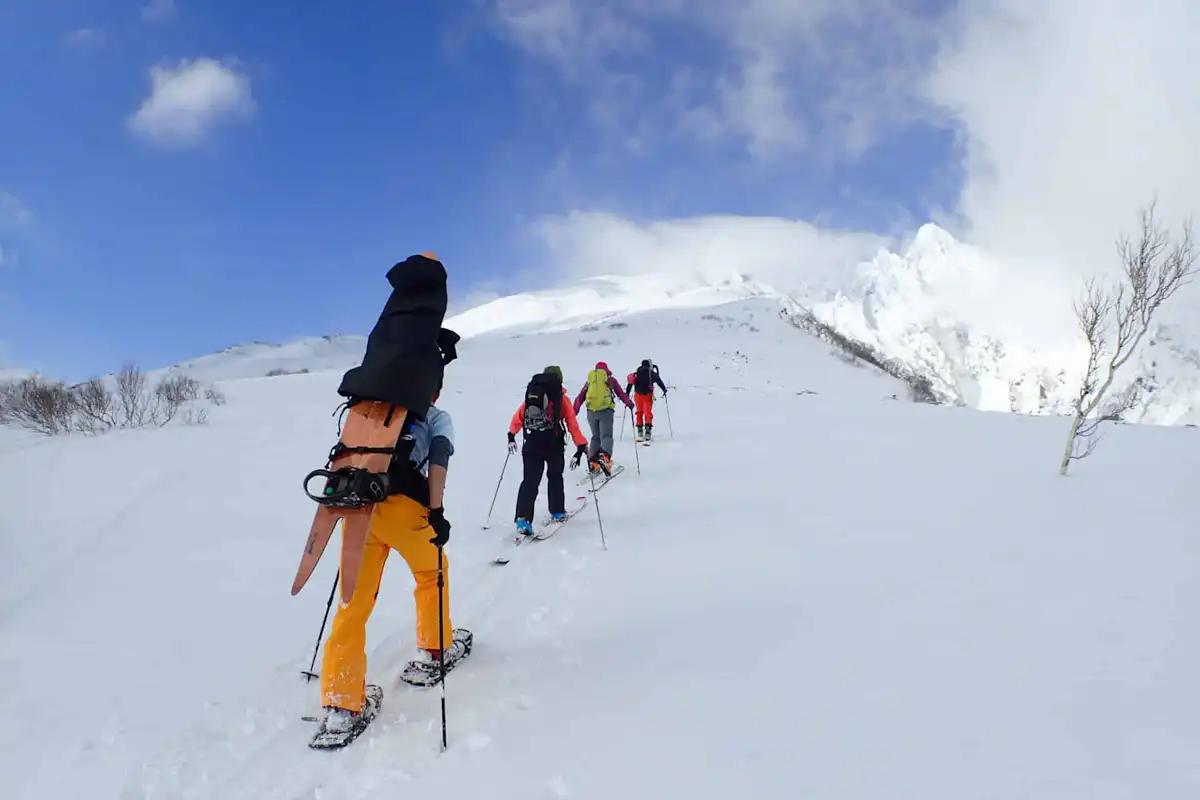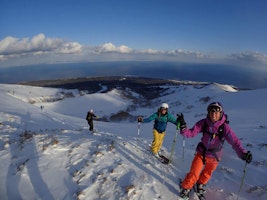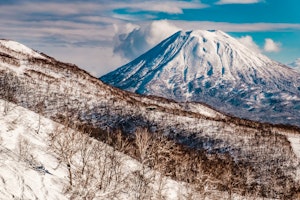Rishiri is a very small island off the coast of North-West Hokkaido. In fact, it takes just under 1 hour to drive around it by car. Nevertheless, its sole volcano offers countless routes for backcountry skiing and tons of powder snow!
From the west shore of Wakkanai, the northernmost city in Japan, you can see a cone-shaped mountain that seems to be floating on the sea. It’s Mount Rishiri, a 1721 m dormant volcano also known as Rishiri-Fuji, due to its resemblance with the most famous peak in Japan.
This volcano stands in the centre of the small and circular Rishiri Island, which has a circumference of only 60 kilometers.
In the island live around 5000 people, most of them dedicated to fishery and tourism. This remote place is also known for harvesting the famous seaweed Rishiri Kombu and also sea urchin Rishiri Uni, both of them widely valued in Japanese cuisine.
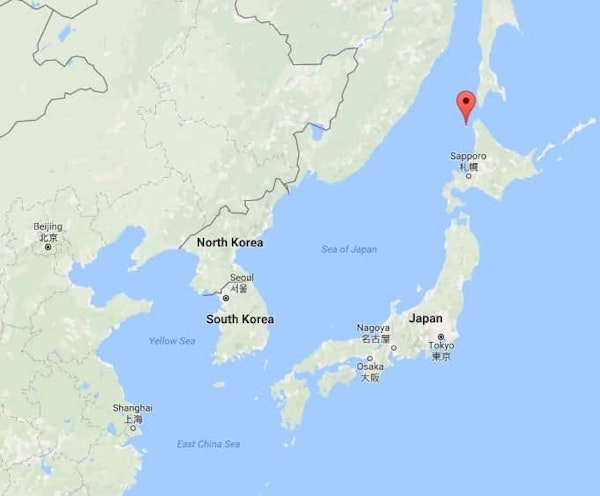
Very close to Rishiri Island is her neighbour: Rebun Island. The two of them offer many outdoor activities like hiking, cycling (there’s a ring road across Rishiri) and sea kayaking. Visitors arrive mostly during summer, when the unique alpine flora of the island is in bloom. Climbing to the top of Mount Rishiri is another typical activity.
But what does Rishiri have to offer during the cold season? Well, backcountry skiing and snowshoe trekking are two great options to enjoy in this amazing off-the-beaten-track winter destination of Far North Japan.
Winter is right around the corner. Check out all the upcoming dates for ski trips in rishiri in 2018-2019 and join a group!
One of the members of our team at Explore-Share, Ryoko Amano, traveled there at the very beginning of 2017. She enjoyed 3 incredible days of backcountry skiing and here’s her experience:
Propeller planes and snowmobiles!
Ryoko arrived to the Island after flying in a propeller plane from Sapporo. At the airport, she was received by Hide-San, who works for the town of Rishiri Fuji (which has around 2800 inhabitants).
As winter is not a very traveled season in Rishiri (although that may soon be changing!), many guesthouses are closed. However, the ones that were open were very hospitable. Ryoko stayed at Hana Rishiri, who also drove to a nearby onsen to relax after skiing in the mountain.
Each morning of the trip began with a snowmobile ride, that towed the skiers through the snow like wakeboarding, through a woodland path to the base of Mount Rishiri. This was of great help because it reduced almost 2 hours of flat hiking up to about 500 meters, and make them save time and energy.
But the most amazing thing about this -tells Ryoko- was that the local people from Rishiri, whether working for the town or at the shop, kindly helped with the morning rides!
In fact, one of the most remarkable things about the Island is its sense of community.
“In the town everyone knows and greets each other. And traveling with a local guide reinforces this feeling, as the whole community supports him. Besides, thanks to him it was incredible easier to solve problems and set the logistic for the trip”, explains Ryoko.
The local cuisine was certainly another thing to enjoy. Homemade dishes like saketoba, tachikama and sai no izushi delighted the travelers.
Moving away from the wind in Mount Rishiri
Rishiri receives heavy snowfalls that usually begin around mid October. The winter season for backcountry skiing starts around mid/end of December and goes until early March.
March and April also provide exciting possibilities for skiers, including the unique experience of skiing down from the summit of Mount Rishiri. (See 'Spring skiing in Rishiri: why it's a good a idea' below).
Rishiri has amazing powder snow, similar to what you can find in Niseko, one of the top ski resorts in Japan. The main difference is that here you seem to be alone, with the whole mountain at your feet… just for you!
“I saw some people the first day, far from where we were. But I didn’t see anybody skiing the rest of the days, and neither saw any tracks on any of the face of the mountain. It was an unprecedented experience!”, says Ryoko who’s skied extensively in North America and the European Alps.
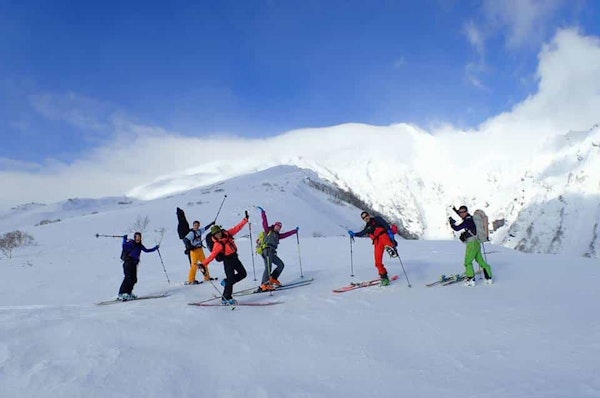
As for the temperature, it’s around -5c in January. However, the strong winds that come from the sea create a wind chill effect, and those -5c become -20c!
But don’t be alarmed about the wind: there’s a “Rishiri Formula” to avoid it. As this is a conical shaped island, whenever the wind blows from one side, the lee side of the mountain is protected from it. That means that there’s usually a non-wind area suitable for backcountry skiing!
Taking into account that you can easily drive to the other side of the Island in 30 minutes, we may call it a problem solved!
Luckily, says Ryoko, they had a really good weather during their 3-day trip, although that’s not a very common thing in these prime winter months.
You can never try all the routes
Due to the strong winds blowing from the sea, Mount Rishiri has a lot of gullies and very steep sides (unlike other peaks like Mount Yotei, for example). In fact, some people say it’s more like a massif with several peaks than only one big mountain.
This is exactly one of the highlights of this place: it offers limitless number of routes. Some of its faces are cliffy, others are smooth ridges. There’s a varied terrain for skiers of all levels, from beginners to advanced. Everyone can enjoy there! And not just skiing, but also alpine climbing and hiking.
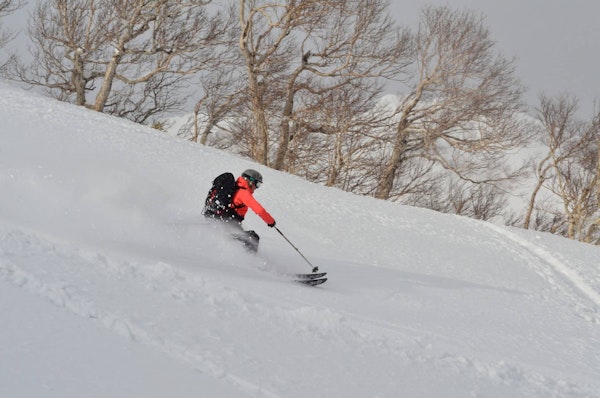
Mount Rishiri looks different from each side: “I was in awe with the landscape”, says Ryoko.
“The whole day was about finding a good face, hiking up and skiing down! Then hike up to another ridge and so on! If we went down in good time, we’d also get picked up by cars that take us back to the guesthouse, where the onsen was waiting for us!”
Besides, there’s another unusual fact about this place: it’s one of the few rare places in the world where you can have a panoramic view of the sea of 360 degrees.
No lifts. No ski resorts. The experience at Rishiri is all about remoteness and freedom.
A local mountain guide in Rishiri
If you are planning to visit Rishiri Island, you should contact Toshiya Watanabe. He was born in the Island, climbed Mt Rishiri over 500 times and he is the only JMGA mountain guide there.
One of his recent clients, Pascal, says about him: "he knows the island like his pocket" and recommends traveling with him: "Toshi-san is an amazing person, always happy, friendly and very welcoming. He knows every bit of the island and guided accordingly bringing us to breathtaking places!".
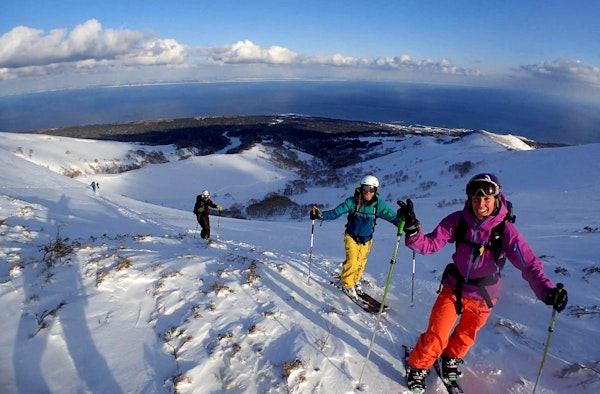
Toshiya does private guiding and also group guiding, where you can join an existing group of people. In that case, you get to meet interesting people and be in contact with Japanese as well. Furthermore, he owns a guesthouse where you can spend your days. In fact, you can read this story of a Canadian couple that did exactly that last winter!
An important advice: hurry up, he's quickly fully booked for all the season!
How to get to Rishiri
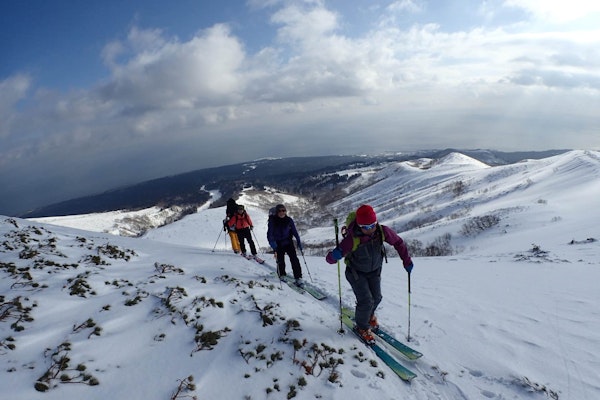
Option 1: Fly from Tokyo to Wakkanai Airport. Take a ferry to Rishiri Port.
Average cost of a flight: JPY 13,000.
In Wakkanai airport you can arrange a port connection to suit the ferry.
Ferry fare: JPY 2,030 (one way).
The ferry runs 2-3 times a days. It takes 1hr 40min. They can be cancelled due to bad weather, but it usually runs at least once a day.
You can be picked up at Rishiri port by someone at your guesthouse.
Why: It is the simplest and easiest way to get there. Probably also the cheapest.
Option 2: Fly from Tokyo to Sapporo Shinchitose Airport. Take a train and a bus to Sapporo Okadama Airport. Fly to Rishiri Airport.
Average cost of the flight from Okadama to Rishiri: JPY 11,000
Small plane or also propeller plane!
You can be picked up at Rishiri airport by someone at your guesthouse.
The bad thing: transport between the 2 airports in Sapporo is tedious.
Why: The most time efficient option. You can also fly if there are bad weather conditions.
Option 3: Fly from Tokyo to Sapporo Shinchitose Airport. Take the train and the underground to Odori Bus Centre in Sapporo city. Take a night bus to Wakkanai Port. Travel on a Ferry to Rishiri port.
There are 6 return buses every day from Sapporo to Wakkanai and it takes 5 hours 50min one way
Costs JPY 6,200 for an adult one way
The bad thing: if you don’t sleep well on an overnight bus then it could be tough!
Why: It may be a good option if you don’t have much time. You can leave Tokyo on an evening and arrive in Rishiri the next morning, ready for a full day touring.
Spring ski in Rishiri: why it’s a great idea

Hokkaido experiences longer winters than the rest of the country. In fact, March and April are still great months for a backcountry ski trip in Rishiri Island. Here's why we think traveling in spring it's a great idea:
Longer days. Day time in April goes from 4:30 to 18:00, while in the end of January goes from 7:00 to 16:00.
More stable weather. Spring has more sunny days and warmer temperatures. Wind and snow are stable too.
Higher chances of reaching the summit (due to longer days and stable weather). Skiing from the summit of Mount Rishiri -a unique experience with a stunning view of the sea above you- is possible at the end of March and the beginning of April. You can do this on the North and West faces of the mountain.
You can still find powder snow. New snow is less frequent but when it snows there's pretty good powder! If you stay for a week to 10 days you are likely to get new snow in March. Even in April, there could be about 30 cm of snow. But it's very sunny so it quickly becomes slushy. In 2017, there was powder even during Golden Week (a Japanese holiday that goes from the end of April to early May). However, it didn't last long until it became very sticky snow with the sun baking it!
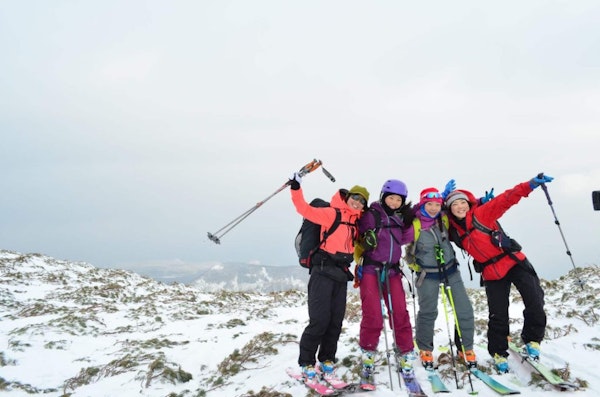
More variation in itineraries. There are routes that can't be accessed in February but can be reached in March. On bad weather days, you can do day trips in low altitude terrains. If conditions are good, you can camp at the summit of Mount Rishiri. The views of the sunset into the sea and the sunrise from the sea from the tent are breathtaking.
You can ski “Asahi Super Dry”. That is: camp, hike during the night, see the sunrise from the summit (asahi), and then ski down super dry new snow before it gets slushy. Most of the trail is accessible by skin and ski crampons, but you will need crampons and an ice axe to get to the summit (because it's very pointy).
Rishiri Island in winter is still a well-kept secret and deserves to be included on your next trip to Japan. Check out all our options for skiing in Rishiri and start planning your adventure!
